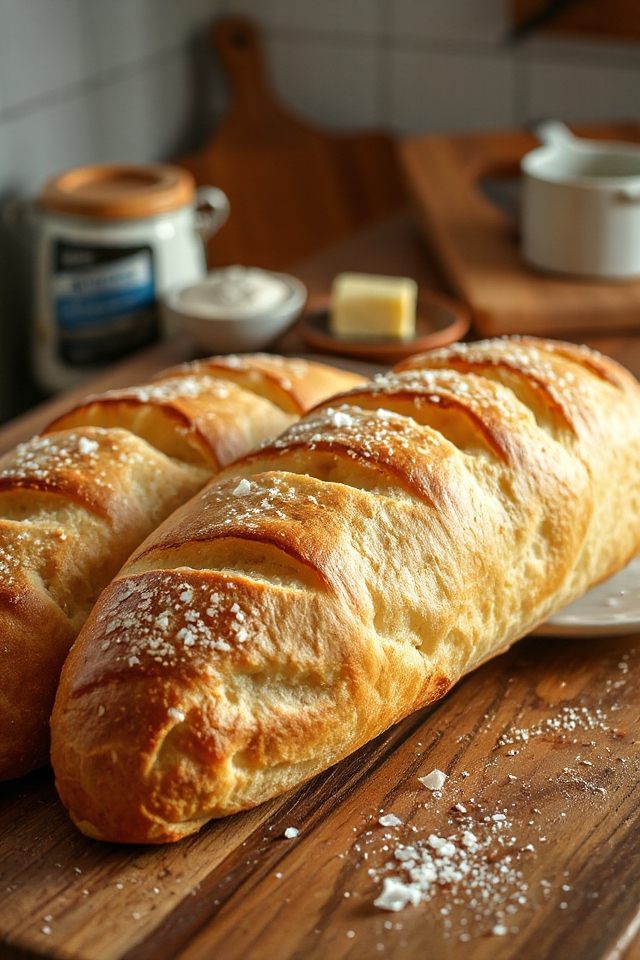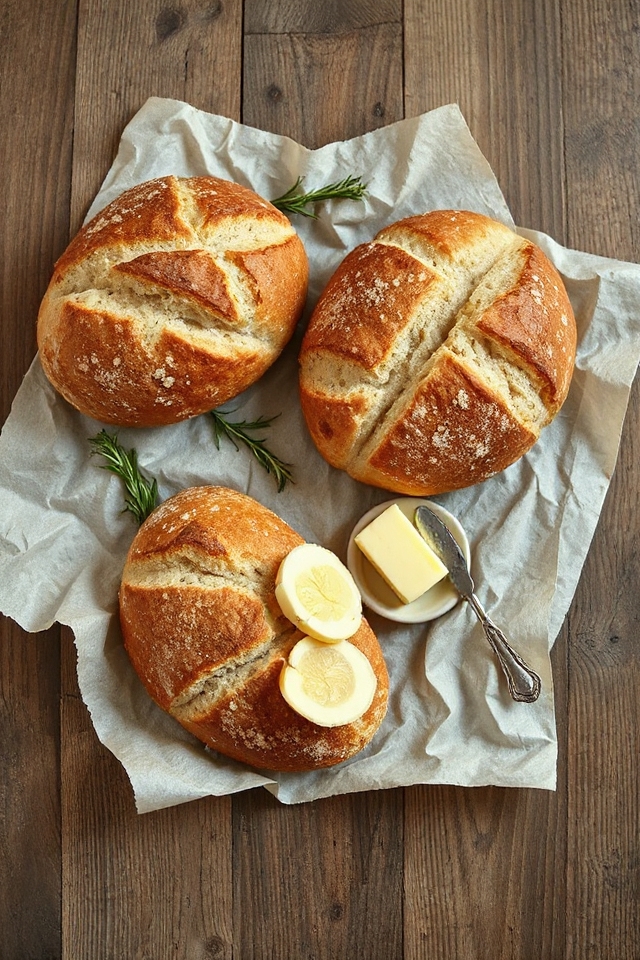Why You’ll Love This Sourdough Ciabatta Recipe
You’re going to love this sourdough ciabatta recipe because it combines the tangy flavor of sourdough with the airy, rustic texture of traditional ciabatta.
The crust is perfectly crisp, while the inside is soft and chewy, making it ideal for sandwiches or just slathered with butter.
Plus, the aroma that fills your kitchen while it bakes is absolutely irresistible!
I find that the hands-on process is therapeutic, and the results are so rewarding.
Once you taste this bread, you’ll never want store-bought again.
Trust me, this ciabatta will become a staple in your home, delighting everyone around the table.
Ingredients of Sourdough Ciabatta
When it comes to baking, gathering your ingredients is half the battle. And if you’re diving into the world of sourdough ciabatta, you’re in for a treat. This bread isn’t just food; it’s an experience, a journey that starts with the simplest of ingredients. Each one plays a role in crafting that delightful rustic loaf with a crispy crust and a chewy interior.
So, let’s round up what you’ll need to create this masterpiece.
Here’s your ingredient list for sourdough ciabatta:
- 2 teaspoons instant yeast
- 1 cup sourdough starter
- 1 1/4 cups water
- 3/4 cup milk
- 1 tablespoon olive oil
- 1 tablespoon salt
- 6 – 8 cups unbleached all-purpose flour
Now, let’s chat about these ingredients for a moment. First up, your sourdough starter: this is the secret sauce that gives your ciabatta that signature tangy flavor. If you’re new to sourdough, don’t fret; you can make your starter at home or buy one from a local bakery.
The instant yeast is a little extra insurance to help your dough rise beautifully. As for the flour, I recommend sticking with unbleached all-purpose flour. It has the right protein content to develop that chewy texture we all love.
You might find yourself grabbing more flour than expected, and that’s okay—just aim for a dough that’s soft but holds its shape. And if you’re feeling adventurous, you could even play around with different flours like whole wheat or bread flour for a twist.
Just remember, the joy of baking lies in experimentation, so have fun with it!
How to Make Sourdough Ciabatta

Making sourdough ciabatta is like starting on a delightful culinary adventure. First, let’s get our hands dirty. Start by grabbing a large bowl and mixing together 1 1/4 cups of warm water, 3/4 cup of milk, 1 tablespoon of olive oil, and 1 cup of sourdough starter. Just imagine the tangy aroma wafting through the air as you create the base for your dough. It’s like a warm hug in a bowl.
Now, in a separate bowl, combine 6 to 8 cups of unbleached all-purpose flour with 2 teaspoons of instant yeast and 1 tablespoon of salt. This is your dry mixture, the powerhouse that will give your ciabatta structure.
Once you’ve got your mixtures ready, it’s time to bring them together. Slowly stir in about 6 cups of your flour mixture into the wet ingredients, one cup at a time. You want a dough that resembles drop-cookie batter—thick but not too sticky. When you’ve achieved that magical consistency, turn the dough out onto a lightly floured work surface and knead it gently. Don’t be afraid to add more flour as necessary; we want a smooth, satiny dough that can hold its shape. But remember, it should still be on the slack side, kind of like me after a long day of baking.
Now, place your dough into an oiled bowl and cover it with plastic wrap or a damp towel. Let it rise in a warm spot for about 1 1/2 to 2 hours, or until it doubles in size. This is where the magic happens. The dough puffs up, and you can practically feel it breathing.
When it’s ready, punch it down—not literally, but you know what I mean—and turn it out onto your floured surface again. Divide it into three pieces and shape them into torpedo forms. Place them on parchment-lined baking sheets and make three slashes on top of each loaf. This is purely aesthetic, but it does help with the baking, too.
Let those beautiful loaves rise again for about 30 minutes while your oven preheats to 425°F. Before baking, give them a nice spritz of water—this will help develop that glorious crust we all crave. Bake for 10 minutes, spritz a couple more times, then lower the temperature to 375°F for an additional 25 minutes until they’re golden brown.
And voilà, you’ve just made sourdough ciabatta! Now, who’s ready to enjoy some warm bread with a pat of butter?
Sourdough Ciabatta Substitutions & Variations
Although purists might love traditional sourdough ciabatta, experimenting with substitutions and variations can lead to delightful twists on this classic recipe.
For a nuttier flavor, try using whole wheat or spelt flour instead of all-purpose. If you’re feeling adventurous, add herbs like rosemary or thyme for an aromatic touch.
You can also swap out half the water for beer to create a unique taste. For a dairy-free option, replace milk with almond or oat milk.
Finally, incorporating seeds like sesame or poppy can add a crunchy texture. Don’t be afraid to get creative and find your perfect ciabatta variation!
Additional Tips & Notes
To guarantee your sourdough ciabatta turns out perfectly every time, I recommend paying close attention to the dough’s consistency during mixing and kneading.
Don’t be afraid to adjust the flour amount; the humidity can affect the dough. If you find it too sticky, add flour gradually while kneading.
Also, using a kitchen scale for measuring ingredients can enhance accuracy.
Letting the dough rise in a warm spot is essential for developing flavor, so don’t skip that step.
Finally, for the best crust, steam the oven during baking by spraying water in it a few times.
Enjoy your baking adventure!
